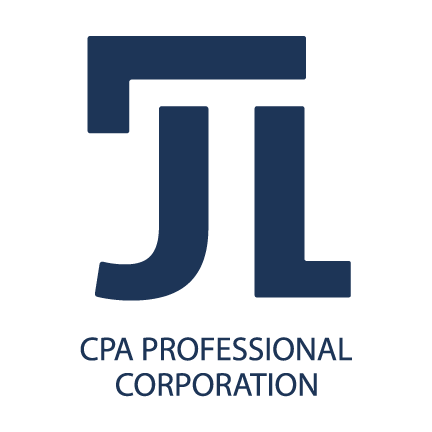The Importance of an Income Statement
No matter what business or industry you’re in, you would have encountered an income statement at some point. It’s one of the most important things for your business and it’s used for a variety of purposes.
So what is an income statement? Here’s an introduction to the basics.
Let’s get started!
What is an Income Statement?
An income statement, also known as a statement of profit and loss (or commonly referred to as a P&L), tells you exactly that: it’s a statement of how much profit and loss your company has gained or lost. Note that this is based over a period of time and not at a specific point of time like the Balance Sheet. For example, for the quarter ended, year ended or some other interval. This is one of the financial statements that are produced on an ongoing basis.
Major Categories of an Income Statement
There are 5 major categories on an income statement: Revenue, Cost of Goods Sold, Operating Expenses, Other Income and Other Expenses
Revenue = how much is generated from the sale of products or services
Cost of Goods Sold = the cost of those products or services that are sold
Operating Expenses = expenses in the normal course of operations but are not tied to any products or services
Other Income = how much is generated from the sale of products or services that are not in the normal course of operations
Other Expenses = expenses that are not in the normal course of operations
Accounting Equations
Here is a quick lesson on some formulas that you need to know and no, I’m not referring to the Accounting Equation:
Gross Profit = Revenue – Cost of Goods Sold
Operating Income = Gross Profit – Operating Expenses
Pre-Tax Income = Operating Income + Other Income – Other Expenses
Net Income = Pre-Tax Income – Taxes
Here is an example of what an income statement looks like which follows these formulas above:
An example of an Income Statement
For example, how do you generate revenue? You utilize assets to do that. For example, if you have a product business, you are selling that product (asset) in order to generate sales.
Revenue
As mentioned above, revenue is how much is generated from the sale of products or services in the normal course of operations (what your company typically sells). For example, if you own a real estate development company, and you decide to sell off a vehicle, it’s not in the normal course of operations but on the other hand, if you own a car dealership and sell a vehicle, it is.
I won’t go into examples of revenue because there’s just so many that you would get bored very quickly.
What’s more important for you is how it’s reported. The income statement can have just one lumpsum line item for all types of revenue your company has but for decision making purposes, I highly recommend you separate them based on the products or services you offer.
This is a great time for some examples:
Construction workers digging the ground
#1 – Construction Company
You could separate your revenue streams for reporting purposes by:
Type of contract (Design build, Construction Management, etc.) or,
Type of industry if in multiple ones (ICI, Heavy Civil, Residential, etc.) or,
Both
#2 – Property Landlord
You could separate your revenue streams for reporting purposes by:
Type of revenue (Basic Rent, TMI, coin-operated washer/dryer, etc.), or
Type of building (Single Family, Commercial, Multiplex, etc.), or
Both
#3 – Law Firm
You could separate your revenue streams for reporting purposes by:
Type of work (Incorporation, reviewing contracts, estate planning, etc.), or
Partner, or
Both
As you can see above, there are many ways to report revenue and separating the different revenue streams would help you make better decisions. After all, how do you make decisions if you don’t have an accurate picture of your revenue streams?
Cost of Goods Sold
As mentioned above, cost of goods sold or cost of sales is the cost of those products or services that are sold in the normal course of operations. The Revenue and Cost of Goods Sold sections on the income statement are what you refer to as ‘Above the Line’. All costs incurred to sell the products or services should be included here.
Let’s use those three examples above and provide some examples of cost of goods sold or cost of sales.
#1 – Construction Company
Equipment rental for a project
Project Manager or Site Supervisor’s payroll costs and burdens
Subcontractor costs
#2 – Property Landlord
Property showings to potential tenants
Property management
Property taxes
#3 – Law Firm
Partner’s payroll costs and burdens if applicable or even assistants
Costs that are directly attributable to services
Like revenue, cost of goods sold can be broken down into various categories for better decision making or you can allocate the costs for a specific project, property or service.
For example, a construction company could have a job costing system set up but still separate cost of goods sold into various categories like labour, equipment or subcontractors. You can see how much of each makes up the total cost and this can be compared.
For a property landlord, you could have a property management costing system or a software that can track costs by property. You may also want to know how much property tax you pay for all properties compared to other costs.
For a law firm, you could have a legal practice management software to track costs against each client or for different services you offer.
If you know your revenue streams and know the cost for each revenue stream then it will be easy for you to determine how you are doing and whether or not changes needs to be implemented.
Operating Expenses
As mentioned above, operating expenses are costs incurred in the normal course of operations but are not tied specifically to a product or service. This is also known as SG&A (selling, general and administrative expenses)/
Some Examples of Operating Expenses
Rent
Insurance
Wages
IT costs
Amortization/Depreciation
Advertising
Office Supplies
Professional fees
Other Income & Other Expenses
As mentioned above, other income is how much you generate from products or services that are not in the normal course of operations. Other expenses are expenses that are incurred but are not in the normal course of operations.
Some examples of Other Income/Expenses:
Interest income on short term investments
You own a construction company and sold a vehicle
You sold property, plant and equipment
Shining light bulb on a post-it on a tack board
The Importance of an Income Statement
Now that we went through some examples of the different categories of an income statement, how is this important for you?
Just to recap, the income statement summarizes how much profit and loss your company generated over a period of time.
The income statement can be used to:
Determine the overall financial health of your company (some questions that are asked can be ‘did you generate enough revenue to cover your fixed or variable costs?’ or ‘how risky is your company?’ or ‘can you sustain operations into the future?’)
Secure loans (think creditworthiness, ‘do you generate enough income to pay off the interest?’, ‘do you have the ability to continue operating?’)
Secure equity funding (if investors want to invest in your company, they want to make sure they can generate a return on investment)
Benchmark (how does your company compare to competitors?)
Limitations of an Income Statement
Even though a number of businesses have an income statement and many stakeholders use this financial statement, there are inherent limitations to using this.
First, how much income you generate does not mean how much cash you generated as this is based on accounting rules. If you took depreciation on property, plant and equipment, it’s an expense but you didn’t have to pay cash for it.
Second, since it’s based on accounting rules and policies, there is an inherent risk to make the company look like it’s more profitable than it really is. This is called management bias.
Third, the income statement doesn’t tell you what the actual cost is you spent is. For example, you bought a large piece of equipment in one year, the cost isn’t captured on this statement since it would show up on the Balance Sheet.
Your Turn
Do you have a better understanding of what an income statement is and why it’s important?
If you found value from this article, make sure to sign up for our newsletter to get notified of a new blog!
At JTL CPA, we are Ontario’s virtual accounting firm. Our goal is to automate your accounting and bookkeeping processes in a way that increases financial visibility. Pair that with our value-added approach and tailored advisory solutions gives you the ability to make sound decisions from good data. Check out our website here: https://www.jtlaccounting.com.
Thank you for making it to the end of the blog post. If there are topics that you would like to learn more about in the future, please let us know down in the comments.
Automation drives success!
Make sure to follow us here:
Until then, see you next time!
#accounting #business #entrepreneurship #success





